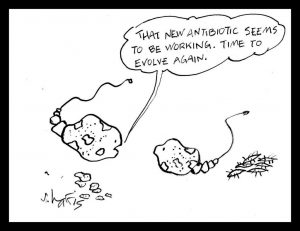Yesterday I came across a 2015 study that really caught my attention. A group of Norwegian researchers has discovered that the combination of dexamethasone with a natural compound called forskolin kills multiple myeloma cells.
 They tested forskolin with other conventional myeloma drugs, too: bortezomib (Velcade), cyclophosphamide, doxorubicin, and melphalan.
They tested forskolin with other conventional myeloma drugs, too: bortezomib (Velcade), cyclophosphamide, doxorubicin, and melphalan.
And by itself.
Results in a nutshell: dead myeloma cells. 😎
Excerpt from the abstract: “Our findings support a potential role of forskolin in combination with current conventional agents in the treatment of MM.”
The researchers believe that forskolin might be able “to diminish treatment-associated side effects,” which of course would have a huge impact, obviously a very positive one!!!, on a patient’s quality of life…indeed, on the QOL of countless patients…
Of course, this is all theoretical, since the researchers used MM cell lines, not actual human beings. I checked the clinical trial website where I found only a few trials testing forskolin for various conditions, mostly eye, weight loss, and lung-related (interesting aside: there were a couple of cystic fibrosis studies there, too).
No myeloma clinical trials.
Are you surprised? I wasn’t. I mean, we know WHO finances almost all the clinical trials…and the ghastly rich and powerful pharmaceutical companies aren’t going to be interested in an affordable natural compound, are they?
No profit, no trial. It’s as simple as that.
And that is why non-toxic substances that might kill our myeloma cells without messing with our QUALITY OF LIFE are completely ignored…ignored even by our own MM foundations that should have our best interests at heart…It’s frustrating, to say the least…unbearably so, I admit, at times.
But let’s get away from negative feelings and focus instead on this potentially POSITIVE bit of news, which is that it seems we have another promising anti-myeloma tool. Yaaaaay!
Incidentally, the Norwegian study is fully available online: goo.gl/dRLgPg
So what exactly is forskolin? It’s a natural compound extracted from the root of an Indian plant called Coleus forskohlii. It has become popular in recent years as a weight loss supplement (the patient studies I glanced at early today, however, have mixed results). More importantly, it has been traditionally used in Ayurvedic medicine for centuries as a treatment for asthma, breathing disorders, and for general health purposes.
Contraindications. Generally speaking, forskolin is considered to be safe. However:
- It may lower blood pressure, so definitely stay away from it if you have low blood pressure or are taking drugs for high blood pressure (beta-blockers, etc.). Of course, if you suffer from HIGH blood pressure, this might be of interest to you.
- If you are on blood thinners such as warfarin or if you have kidney disease, forskolin is not for you.
- It may also increase your heart rate and your levels of gastric acid.
- There have been reports about possibly contaminated supplements in Europe.
Apart from these things, though, so far I haven’t read anything super negative about forskolin.
The big question is: will it work for myeloma patients? No idea, of course. As I mentioned, the Norwegian study used myeloma cell lines, not patients. But that hasn’t stopped me before, and it probably won’t stop me now…as long as my research keeps turning up positive information. Right now, though, it’s too hot here in Florence to think about experimenting with a new compound, which is good in the sense that it gives me time to do some further reading…
But I’m intrigued, really intrigued, and that’s a good start…
Hmmm, final (obvious!) thought: has anyone here taken this supplement? I’d love to hear from you! Thanks!
 They tested forskolin with other conventional myeloma drugs, too: bortezomib (Velcade), cyclophosphamide, doxorubicin, and melphalan.
They tested forskolin with other conventional myeloma drugs, too: bortezomib (Velcade), cyclophosphamide, doxorubicin, and melphalan.
